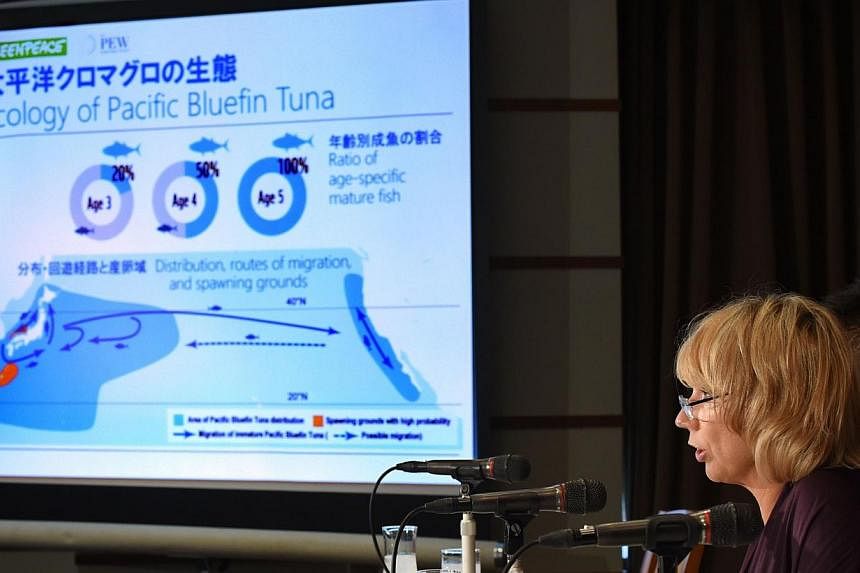TOKYO (AFP) - Countries and regions that fish in the northern Pacific agreed Thursday to cut by half the number of young bluefin tuna they catch in a bid to double the ocean's stock over 10 years.
A four-day subcommittee meeting of the Western and Central Pacific Fisheries Commission (WCPFC) closed in Fukuoka, south-western Japan, where Tokyo's proposal for a drastic reduction on the 2002-2004 average catch was agreed.
Participants, including South Korea, the United States, Canada, Taiwan and Japan - the world's biggest consumer of tuna - are hoping the move will help to safeguard the at-risk species.
The grouping, of territories in the northern part of the vast area covered by the WCPFC, will present the plan at the organisation's annual conference in December, along with a 10-year recovery plan for Pacific bluefin tuna, beginning in 2015.
Tokyo has been reluctant to reduce catches, despite mounting scientific evidence that stocks are near collapse.
But the shift in Japan's policy towards more radical conservation comes after an international independent assessment found last year that stocks of bluefin tuna, prized by sushi lovers, had fallen 96 per cent from their original levels.
Young fish form the majority of specimens now being caught, pushing the species closer to extinction, it said.
The agreed plan would see the amount of young tuna - defined as those weighing less than 30 kilogrammes - that Japan is able to catch cut to around 4,000 tonnes a year.
"We have no other way but cutting the catch to less than half if we want the resources to recover," said Mr Masanori Miyahara, advisor to Japan's Fisheries Agency, quoted by Jiji Press as saying.
Under the agreement, the ocean's bluefin tuna stock would double over the next decade to 43,000 tonnes.
Greenpeace Japan offered a qualified welcome to the move, applauding the fact that the international forum had finally "taken a step forward" towards the sustainable control of the resources.
Mr Wakao Hanaoka, an expert in marine ecology for the conservation body, urged Japan to take more initiative to conserve the species especially before they lay eggs.
"It would be insufficient if the resource control plan allows fishermen to sweep up schools of tuna before they lay eggs, even if the plan aims to increase the number of young fish," he said in a statement.

